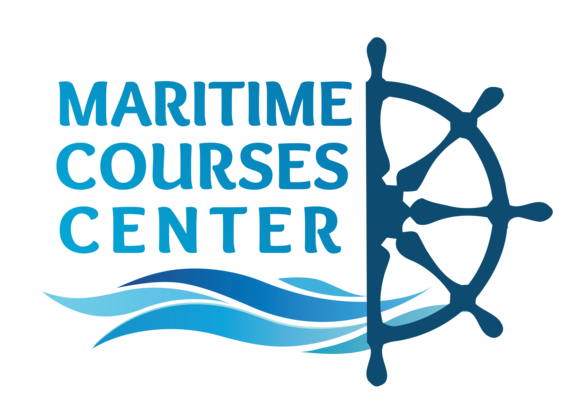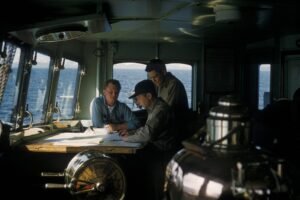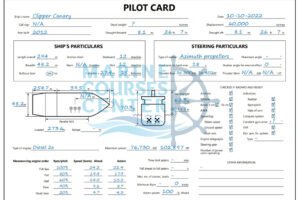cargo operation | cargo handling | ship safety | safety ship | cargo handling equipment | mcc
Safety of personnel
a) Before commencing cargo operation, any opening or gape between cargos with a depth of over one meter should be temporary fenced by ropes.
b) Do not cover any unfenced hatches, openings or gaps between cargos with tarpaulins, this will give a false safe feeling and will cause persons to fall.
c) Don’t allow workers to use portable ladderslocated in the hatch opening during cargo operation.
d) No body is allowed to walk on the hatch coaming.
e) No body is allowed to walk or linger under a moving load; slings can part, cargo can slip through nets or fall off pallets.
f) Ensure that everybody left the cargo hold before closing the hatch-cover.
g) No smoking on-deck or in the holds.
h) The OOW must ensure that the Cargo holds has been adequately ventilated before any person is permitted to enter.
i) Depending on the nature of cargo and stowing equipment used, the OOW should operate and check ventilation system regularly, in order to maintain safe atmosphere in the holds.
j) Lighting must always be switched on before entering darkened cargo holds.
k) Portable ladders shall be in good condition and must always be adequately lashed.
l) Nails should be removed from old dunnage.
m) Some cargoes can create dust or emit flammable gases which create a danger of explosion.
n) The gangway must be used for all access between the ship and shore; no-one should be allowed to step between the deck and the quay when these are almost level.
o) Stevedores often throw twist-locks and other container fittings onto the deck when discharging containers. This can cause damage to the ship’s structure, securing equipments and severe injury to personnel below.
p) Cargo light (portable light) must never be hanged from the electric cable, cargo-light must be positioned away from any cargo specially flammable cargo, heat from the cargo light may cause fire.
q) During rain use only waterproof cargo-light, rain can cause electric short circuit, sudden cooling by the rain to the light bulbs may cause them to explode.
Safety clothing
The OOW should always ensure that all personnel employed on the ship wear clothing and other relevant protection which is suitable for the job they are performing, and the location in which they are working.
Everyone on deck should wear:-
a) Hard hat
b) Safety shoes with steel toecaps
c) Gloves should be worn which offer sufficient protection appropriate to the materials being handled (e.g., leather gloves for handling wires).
d) Suitable dust mask (If Cargo of a dusty nature)
e) When appropriate, workers should wear eye, face and hand protection.
f) Specialised protection is sometimes provided when certain hazardous cargoes are carried, which must be used in the event of a spillage.
g) Hearing protection should be worn if there are high noise levels around an activity.
h) Studded boots or none-slip shoes should be worn by personnel working on timber deck cargoes.
i) High visibility clothing or markings should be worn by all personnel on Ro-Ro ships and Car Carriers.
Safety precautions during Opening and Closing Hatch Covers
a) The OOW must personally supervise all stages of opening and closing hatches.
b) Track-ways should be clear of obstructions, and all personnel should stand well clear.
c) Secure hatch covers after opening.
d) No-one is permitted to stand on a hatch cover whilst it is moving.
e) Secure Hatch Cover after opening.
f) Guards must be erected around all openings, however temporary.
Safe operation of cargo-handling equipment
It is the OOW responsible to ensure that the ship’s cargo-handling equipment is in safe condition for the stevedores to use, so he must check all cargo-handling equipments before commencing cargo operation
The following is a guide; actual checklist should be developed onboard depending on the actual equipments fitted on the ship
a) All equipment must be clearly marked with its Safe Working Load (SWL).
b) All equipment must be in good condition; there must be no signs of excessive wear.
c) All wires should be free from barbs, broken strands, flattened areas and kinks, and be well lubricated.
d) All blocks and other moving parts must be free, and should be kept well lubricated.
e) All operating controls should be clearly marked, tested regularly, and switched off when the equipment is not in use.
f) All trips, cut-outs, limit switches, over-load devices, slack wire detectors and all other safety and fail-safe features must be functioning, and they should be tested regularly; and must not be over-ridden or switched off, except under specific permitted circumstances; over-ride keys should not be given out to stevedores..
g) Vents used to provide cooling air to the lifting equipment’s motors must be open.
h) Sufficient power must be available at all times.
i) Winch-Brakes should be examined and tested regularly.
j) Lubricating and hydraulic oil levels must be checked before operating and topped up as required.
k) Crane’s windows should be cleaned regularly.
If the OOW detects any faults in the ship’s equipment, he shall immediately suspend using the faulty gear and inform the Chief Officer.
Safety during cargo operation
a) The operation should be conducted with due care, and without undue haste.
b) The safe working load of the equipment must not be exceeded.
The OOW should check not only the weight of items of cargo but also the weight of mobile cargo-handling equipment, such as fork lifts and bulldozers, which is to be lifted by the ship’s gear. Often such equipment has a detachable counterweight to avoid overstressing the lifting gear.
c) The OOW must be sure that all parts of the system are operating within their designed limits.
d) Use appropriate slings to the type of and packing of cargo
e) The equipment must be operated by a skilled and experienced person.
f) If the operator cannot see the entire operation (e.g., from the quay to the bottom of the hold) then a signalman must be positioned to cover his blind area.
g) Controls must never be left unattended, unless switched off.
h) Equipment should be operated smoothly, without any jerking; in particular the load should be taken up gradually, as snatching produces excessive strains and stresses in the equipment.
i) The load must not be left suspended, but should be rested on deck, or some other adequate support, if there is an unexpected delay. This does NOT apply to very heavy lifts, which should be returned to their original position if delays arise.
j) Appropriate communication must be used, with all signals clearly understood by all concerned.
k) Slack wires should be avoided, and any slack turns on a barrel must be removed as soon as they are noticed, as there is a danger they may pull out suddenly under load, and maybe cause an accident.
l) Cargo should not be dragged over other cargo or allowed to collide with parts of the ship’s structure or fittings.
m) Employ any specialised equipment available for that type of cargo.
n) Handling-instruction labels on the cargo must be obeyed.
o) Operations such as changing the gearing, or twinning two systems, must only be performed under the direct supervision of the OOW, who should check the manuals or consult the Chief Officer if he is not sure of the procedures or operational requirements.
Leave A Reply
You must be logged in to post a comment.





2 Comments